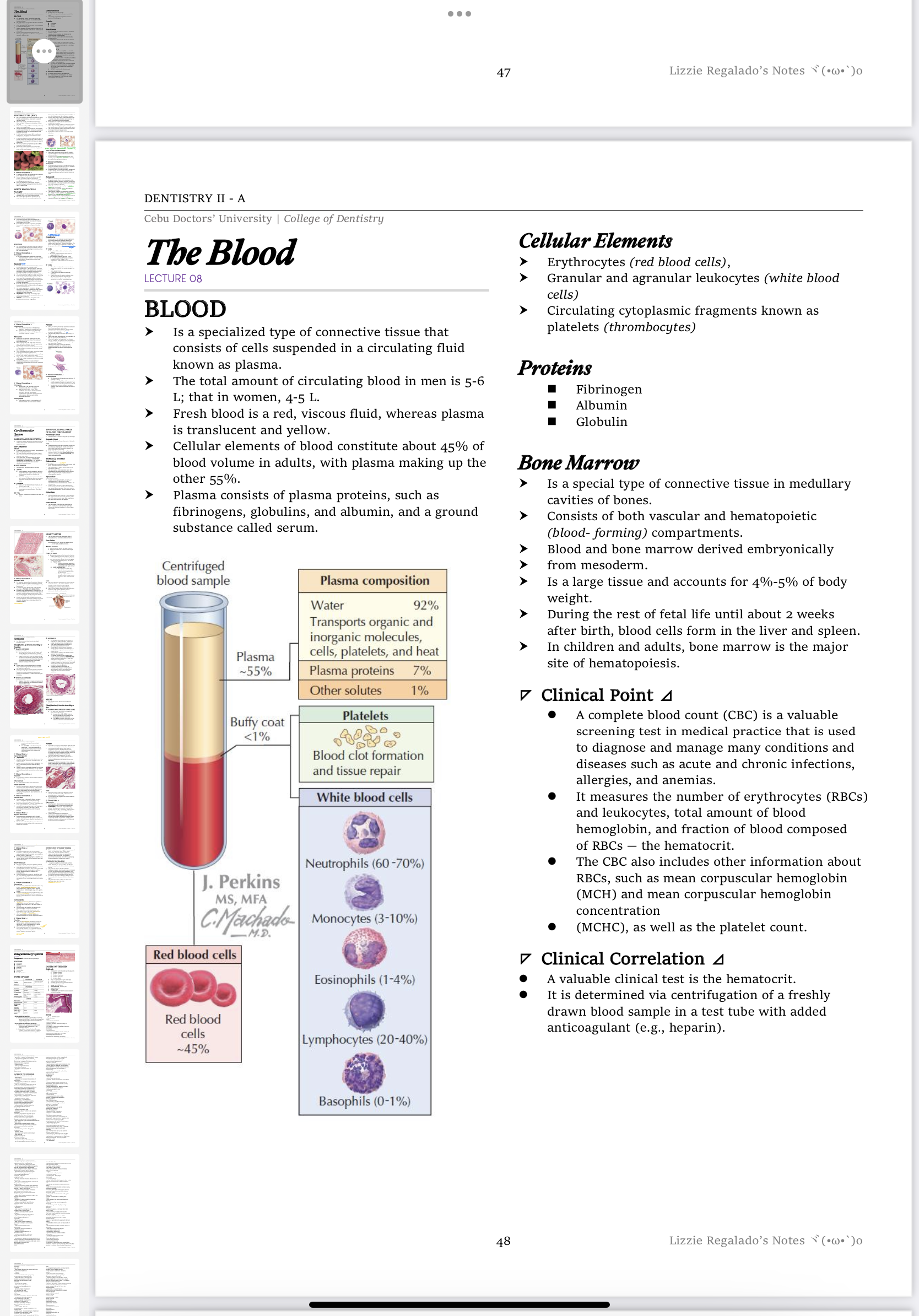What are the components and functions of blood?

Understand the Problem
The content in the image discusses various aspects of blood, including its composition, types of cellular elements, and the role of bone marrow, among other details. It is informational in nature, likely part of a lecture or educational material in dentistry or medicine.
Answer
Plasma, red blood cells, white blood cells, and platelets; transport, waste removal, immunity, clotting.
The main components of blood are plasma, red blood cells, white blood cells, and platelets. Blood functions include transporting oxygen and nutrients, removing waste, immune response, and clotting.
Answer for screen readers
The main components of blood are plasma, red blood cells, white blood cells, and platelets. Blood functions include transporting oxygen and nutrients, removing waste, immune response, and clotting.
More Information
Blood is vital for various functions, including transporting oxygen to tissues, removing carbon dioxide, fighting infections, and helping wounds heal.
Tips
A common mistake is not differentiating between the components and their specific functions. For instance, failing to note that red blood cells primarily transport oxygen.
Sources
- Components of Blood - Merck Manual Consumer Version - merckmanuals.com
- Blood: Function, What It Is & Why We Need It - Cleveland Clinic - my.clevelandclinic.org
- Blood and the cells it contains - NCBI - ncbi.nlm.nih.gov
AI-generated content may contain errors. Please verify critical information